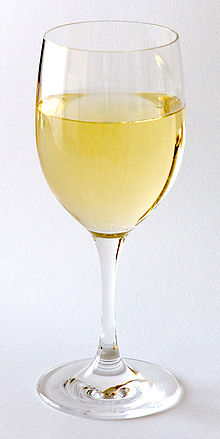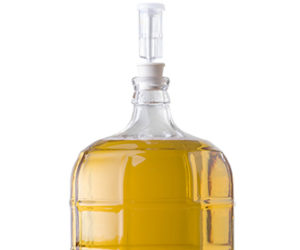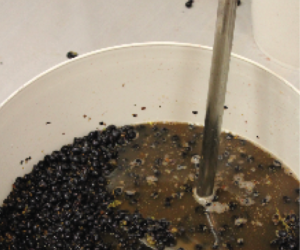Q
I am going to be making wine using fresh Canelli Muscat grapes from California. I do not want a sweet wine. My question is which yeast would you recommend, and how long would you leave the skins in contact with the juice before pressing? I live in the Toronto area and have access to Lalvin yeasts.
Cesare Ierullo
Thornhill, Ontario
A
Sounds tasty to me! I love a dry (or even off-dry, maybe with residual sugar of around 5 g/L), crisp Muscat wine. Historically, Muscats have been used in many wine types, from sweet and desserty to fortified to dry. I’ve made a few myself in my career, starting with the infamous “Vin de Glaciere” dessert wine and Moscato Frizzante at Bonny Doon Vineyard to a dry Muscat blending component I make for many of my dry white table wine blends today.
Muscats (which also include variants like Orange Muscat and Muscat of Alexandria) are a special family of Vitis vinifera grapes in that they contain an aromatic class of compounds called terpenes that are largely responsible for their exotic aromas. Only “free” terpenes, that is, terpenes not bound to a sugar molecule in the form of a glycoside, are detectable in the aroma of a finished wine. During fermentation, most yeast cells produce an enzyme that will help cleave off the terpenes, essentially freeing them up to contribute chemically to the wine’s aroma. Some yeast strains do this better than others and for this reason; one of my very favorite yeast types for Muscat wines is Zymaflore VL1, which is made by Laffort. I also have had success using other strains that have this same “Beta-glucosidase” activity, including Steinberger Uvaferm (AKA DGI 228) and Lallemand’s QA23 (the latter two available through Scott Labs and other outlets).
No matter which strain you use, be sure that you read up on all the specifications from the manufacturer around ideal performance conditions. For example, on Laffort’s website there is a pdf fact sheet available that tells you its maximum alcohol tolerance, ideal fermentation temperature range and relative nitrogen requirements. By adjusting your juice and fermentation conditions to each yeast’s unique ideal parameters, you maximize the chance for a successful and complete fermentation. For example, Zymaflore VL1 can ferment up to 15% alcohol but has very high nitrogen requirements, so you must make sure you are starting with at least 300 ppm “YAN” (yeast available nitrogen). If you choose to use a “special needs” yeast like VL1 it can pay off to send a sample of juice into a wine lab to get the YAN number so that you make sure you’re not left with tons of stinky hydrogen sulfide from cranky yeast covering up all your gorgeously un-bound terpenes.
With regards to your skin-contact question, I rarely purposefully give my aromatic whites any skin contact time because I’ve run into browning, tannin-extraction and bitterness issues doing that. Frequently, the travel from vine-yard to my cellar (sometimes 60 minutes, sometimes a few hours) is enough skin contact for me.
Home winemakers that are using frozen grapes or grapes toted long distances from the source need to be aware that there will already have been a certain amount of maceration happening. Frozen grapes, especially, have had many of their skin cell walls burst during the freezing process already, and as they thaw and are pressed they will release juice (and potential browning components, tannins, etc.) that much more easily. Unless you are willing to do a fining addition of pvpp, protein and or both later (and you may be, I just find it an annoying extra step), I recommend getting your aromatics by using a yeast strain with Beta-glucosidase activity and forego any kind of skin contact regimen.
Q
I make wine using kits. I won’t use tap water. But at my grocery store I can buy distilled, spring, and drinking water. Which is best for my use? A second question; when using synthetic corks, does the rule still apply to let the bottles stay upright for a few days or can I drop the bottles horizontally right after corking?
Kris Bradley
New Albany, Indiana
A
To address your first question: A chemistry teacher in high school once mentioned that since distilled water was free of minerals and many dissolved gasses, it behaved differently in osmotic equilibrium situations than regular ol’ tap water. That is why we always rinsed off our lab glassware with distilled water. Its very lack of dissolved material makes it a great solvent for getting the last remaining “stuff” off of lab ware; because it doesn’t have anything dissolved in solution, it’s like a dry sponge for minerals and solutes. Because of that, and because it’s expensive, I’ve never used distilled water in winemaking but reserve it for lab uses only. Even though largely anecdotal, I know that yeast cells are very vulnerable when they are being rehydrated, and I would want to have the osmotic pressure not be a challenge for them during this time. My fear would be that the distilled water would “suck out” of their delicate membranes necessary minerals like potassium and possibly disrupt the hydration process.
As for spring vs. drinking water; that’s a tougher question to answer. The most important things to make sure are not in your water are chlorine, microbes and any obvious toxins like lead or pesticides. I would bet that both are fine with regards to all of those.
If you use your domestic city water supply it’s probably fine, but I would see if you can get the municipality’s water report that will show you how much chlorine, if any, is in your system. To really make sure you’re controlling your city/domestic water supply for chlorine, I suggest employing a charcoal filter (and sometimes you can buy chlorine-specific filters) housing that can be mounted on faucets or even a garden hose. Sources include Grainger Industrial Supply (every cellarmaster has this catalog on their desk) or even “big box” home and garden supply stores. The water filter approach might be the very best and cheapest in the long run. It’s hard to say, unless you get in touch with the manufacturer, how much chlorine is in purchased “spring” or “drinking” water.
As to your second question: I always like to allow any cork a little time to re-expand back into the bottle. Especially synthetic corks, in my experience, tend to have a harder time re-expanding completely and may indeed leak a little bit.
I will be totally honest with you here and lend you a little of my experience experimenting with many different closure types over the years. I won’t name specific names, but I never have been a fan of synthetic corks. Screwcaps are great; I use them currently in my Garnet Vineyards brands. What I don’t like is the squishy, rubbery, plastic plugs that supposedly work the same as corks by being inserted into the bottleneck. I’ve found over the years that I suffer more premature oxidation, loss of free sulfur dioxide (FSO2) as well as high levels of bottle-to-bottle variation with synthetic corks. Though natural corks can still contribute to TCA (the “corked” defect, perhaps an incidence of 1% or more), I find that the actual instance of that is still less than the combined issues synthetic corks present.
Q
We had some Syrah in a 60-gallon (227-L) barrel that developed volatile acidity (0.70 if I recall from tests), so we hit it with SO2 and saved it. After bottling we hosed out the barrel and treated it to Oxyfresh (approximately a 16 ounce/0.45 kg bag), a hydrogen oxide method. We filled the barrel with the Oxyfresh and H2O and let it sit for a day, drained it and hosed it out again with hot H2O and then filled it with water and 2 ounces (57 g) of SO2 and 4 ounces (114 g) of citric acid and let that sit for a day. Again we drained, hosed and after it stopped dripping we filled it with another wine. The question is, would you have reused the barrel after having a wine with VA even after treating it?
John Larsen
Corvallis, Oregon
A
It sounds like you took the right approach. A VA (volatile acidity) of 0.70 is not “out of this world” high, though it is a little elevated. Especially if this was a wine over a year old, a VA like this wouldn’t necessarily alarm me unless it made a big jump (say from 0.50 to 0.70) within a month or less. That would be a sign of some kind of microbial bloom. If your wine has just had a gradual increase or “creep” in VA over the months, that is totally normal and I would not hesitate to use the barrel again. The treatment you describe above is pretty industry standard.
However, if you experienced a big jump in VA in a short period of time, I might hesitate to use the barrel again, especially if you’ve used it many times and had extracted all of the oak flavor and aroma out of it (2-3 years, depending on the barrel). If it’s a brand new barrel and has only been used once I might take the risk and re-use it after cleaning it out well as you describe above. In that case, I would make sure to monitor the VA of the new lot every 2-3 weeks for about three months to make sure I didn’t have anything growing that I didn’t want. After that, I would say you could back off to monthly monitoring. Good luck!
Q
After reading a good deal of literature (including your book, The Winemaker’s Answer Book) there seems to be a plethora of opinions regarding the amount of SO2 required at different stages and varying pH levels. I find much consistency with the “general” rules for maintaining adequate levels of SO2, but when searching for more specific information, I find that there is a wider range of thought that doesn’t necessarily coalesce. For example, in one book the author suggests that free SO2 levels should never exceed 50 ppm unless “you are trying to address some specific problem.” In a different book, the author provides a table showing the relationship between pH and required free SO2 levels (the higher the pH, the higher free SO2 required). For example, a wine with a pH of 3.7 would require free SO2 levels of 63 ppm, clearly above the first recommendation of 50 ppm. And, in several books, there is a recommendation to reduce free SO2 levels at bottling to 25–30 ppm, with no mention of adjustments for wines with a higher pH.
In trying to simplify matters, I researched the use of molecular SO2 measurements in lieu of free SO2 levels. If I understand correctly, molecular SO2 takes the wine’s pH into account, so any pH scaling requirements are already accounted for in a molecular SO2 target. Most books recommend 0.8 ppm for the proper SO2 level, but don’t mention reducing levels at bottling. Others recommend 0.5 ppm molecular SO2 for red wines and 0.8 ppm for whites. While reading the latest issue of WineMaker, I noted that the Syrah recipe called for bringing the molecular SO2 level to 0.8 ppm (the white wine level) and maintaining it through bottling. While I’m aware that different opinions are more often in play than not, the lack of clarity is giving me a major headache. At this point, my best option for red wines seems to be maintaining a post-MLF molecular SO2 level of 0.5 ppm through bottling. Can you help me understand?
Steve Wise
Pleasanton, California
A
You do an excellent job of outlining one of the major conundrums we all experience in the winemaking world. How much SO2 do we need to add to our wines to keep them safe? How much is too much? To be very honest, it’s something even commercial winemakers do “by feel.” While I wish we could all hue to a rule like, “Maintain 0.8 ppm molecular SO2 until bottling,” the reality is that, even for “normal” pH wines (reds 3.55-3.65 for example) that’s simply too much SO2 to have to add. You’ll adversely affect the aroma and quality of your wine, and while microbial happiness is always a goal we strive to achieve, you simply can’t control your bugs by SO2 alone. We have to learn to live with a certain amount of risk in return for having a wine we can smell without burning our nose hairs off!
Your approach of maintaining 0.5 ppm molecular is quite reasonable, and may be a rule of thumb that you find works for you and your wines. Myself, I tend to keep all of my reds around a pH of 3.65-ish and find that maintaining FSO2 between 26-30 ppm until bottling is usually just fine. I keep wines sound this way in tank and barrel (with good topping) for about 12-18 months before I bottle. However, if my pH levels are higher for some reason, I may add 5 ppm SO2 more and I tend to watch my VAs and monitor for film yeasts a little bit more. In a quick non-scientific poll of my winemaking buddies here in Napa and around the state, we all agree that trying to achieve a molecular SO2 of 0.8 ppm is a nonstarter. We all tend to use a variation of my approach and find that it works for us.
Related Links:
• For more in-depth information on SO2, read WineMaker magazine’s Winter 2000 article “Solving the Sulfite Puzzle” at http://winemakermag.com/component/resource/article/634






